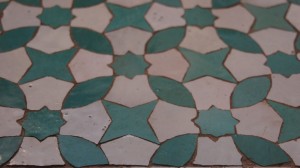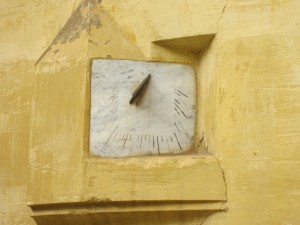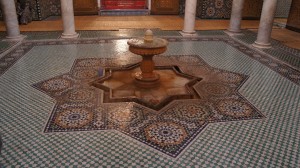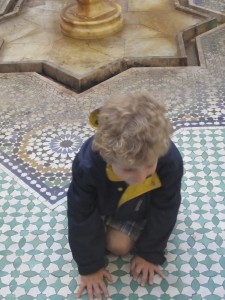John keeps reminding us of the difference between the visual restraint of Alawite style as opposed to the decorative intensity of the Marinids, embraced and extended by the Saadian dynasty. Remember that the Alawite dynasty came north out of the Tafilalt, where we saw some of that visual restraint at work. Basing their power in their descent from Muhammed, the Alawites eschewed exuberant design in order to insist (as Muhammed insisted) on simplicity.
This doorway into the courtyard of Moulay Ismail’s mausoleum certainly reminds me of the Qsar Al-Fidha down in Rissani:
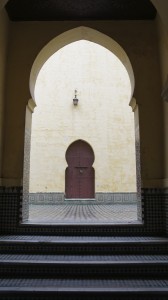
The courtyard itself is similarly restrained, with only a zellij floor and a small strip of zellij along the bottom of the walls.
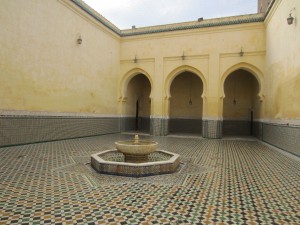
The calligraphy here is one of the Alawi mottos:
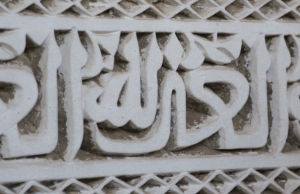
Al Aali Allah: God is very high (or superior). The other two include the Baraka Muhammed added to the Bou Inania
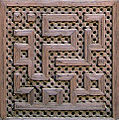
and “Al Afia” which means “Pardon” in fusHa, but “fire” in Darija. (It’s written abundantly within the mausoleum, to ambiguous effect.)
But here in the courtyard, one might say we find functionality in place of decoration: a fountain for ablutions, a sundial for timekeeping:
But let’s face it, you can only take restraint so far, especially when we’re talking about the final resting place of the man who (rather brutally) shaped the Maghreb into a modern nation.

The tomb itself, in a prayer space, is only visible from a distance for non-Muslims, but the antechamber is gloriously wrought:
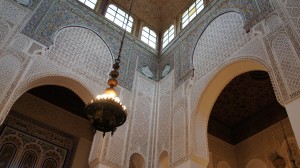
The details are extravagantly beautiful:
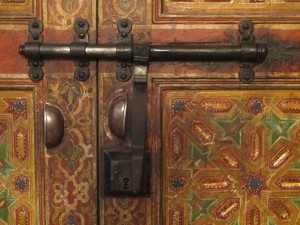
And it’s hard to imagine a more intricately painted ceiling:

Apologies for the very blurry picture of one of the two grandfather clocks sent from Louis XV to Moulay Ismail.
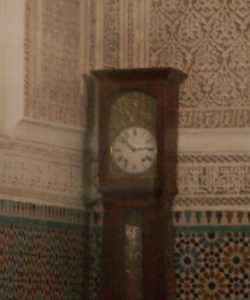
The story that comes with them goes like this: Louis XV offered his sister to Moulay Ismail as as one of his wives; when the sister was informed, she said there was no way she would go to Morocco. In her place, Louis XV sent these two clocks, with a note saying that they would be more constant than his sister would have been.
Yet even in the midst of all this grandeur, there are designs that conduce to calm and simplicity:
